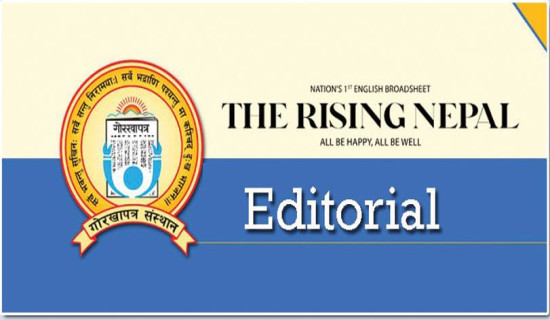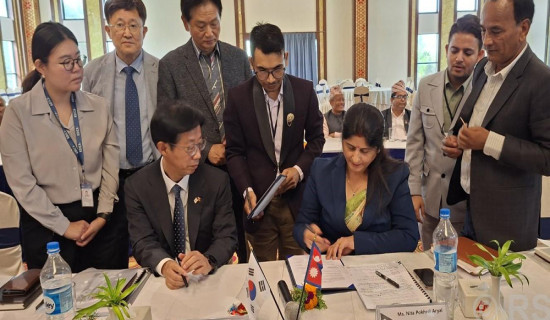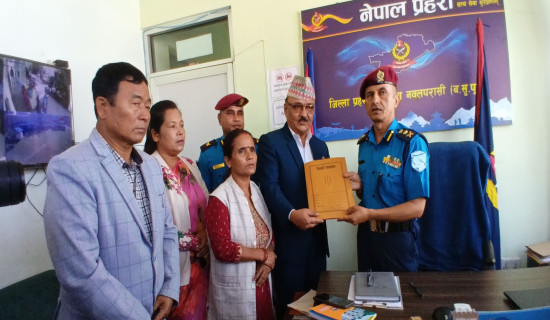- Thursday, 6 November 2025
Agricultural Trends
Nepal’s agro sector has seen shifting trends, which call for structural reforms to make it a lucrative occupation for the youths, who are leaving the country in droves in search of better employment opportunities abroad. A report of the National Sample Census of Agriculture 2021/22, unveiled the other day, shows that the number of households engaged in agriculture has gone up but female-headed holdings has dramatically risen as more and more males have opted to go abroad. The male-headed holdings stand at 2,792,505 (67.7 per cent) and female-headed holdings 1,338,284 (32.4 per cent). In 2011/12, 3,104,338 men (81 per cent) and 726,755 women (19 per cent) were involved in the agro sector. A vast swath of arable land has remained fallow in the absence of energetic farmers. With the increased number of female farmers, the policy makers need to take gender issue into account while framing agricultural strategy.
Although the share of agriculture in the GDP (24 per cent) is gradually declining, Nepal is still an agrarian nation. The census report states that around 19.44 million Nepalis out of a population of 29.16 million rely on agriculture for their livelihood. Of them, 9.54 million (49.1 percent) are male and 9.90 (50.9 percent) female. Another change seen in the agro sector is that the number of households engaged in agriculture has declined. It is now 62 per cent down from 71 per cent a decade back. Nepal has around 4.13 million farm holdings but 3.99 million people possess land and 131,504 are without them. Around 45 per cent of families meet their annual food expenses from agricultural earning. Of the total 6.67 million households in the country, 4.13 million are involved in agriculture. It was 3.71 million in 2011/12.
The average size of farm households was 5.4 persons in 2011-12, which has decreased to 4.7 persons in 2021-22. With the population growth and division of families, the number of landholdings has increased significantly. The number has increased from 3.36 million in 2001-02 to 4.13 million in 2021-22. Sixty years ago when the first agro census was conducted, there were 1.54 million holdings in the country. This has naturally led to the decrease of the size of the landholdings. The average size of agricultural landholdings was 1.1 hectares sixty years ago. Then it dropped to 0.68 hectares in 2011-12 and further to 0.55 hectares in 2021-22. Nepal is struggling to attain self-reliance on agriculture and curtail imports of food worth billions of rupees from abroad annually but interestingly, statistics show that the area of land used for farming has increased. The census shows around 2.21 million hectares of land is being used for agriculture at present. In 1961, it was 1.68 million hectares.
The census implies that the number of farmers raising cows has gone down in the last 10 years. This indicates that many people have moved to cities from villages or outside the country in search of better sources of income. The government has been providing loans to farmers at subsidised interest rates to enhance the productivity of the agro outputs. But the census reveals that the number of households seeking the loan has sharply dropped. Only 12 per cent of households have taken agricultural loans. The cumbersome bureaucratic procedures have been attributed for discouraging farmers from getting loans. The census offers valuable insight, trends and development of agriculture sector of Nepal, which should be utilised for its integrated development plans.

















